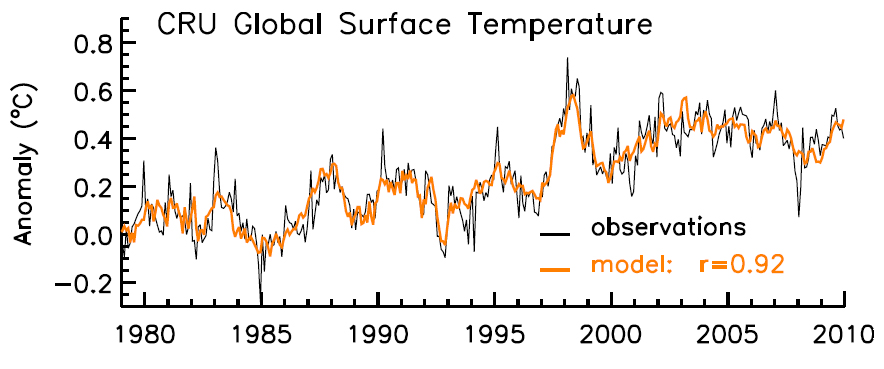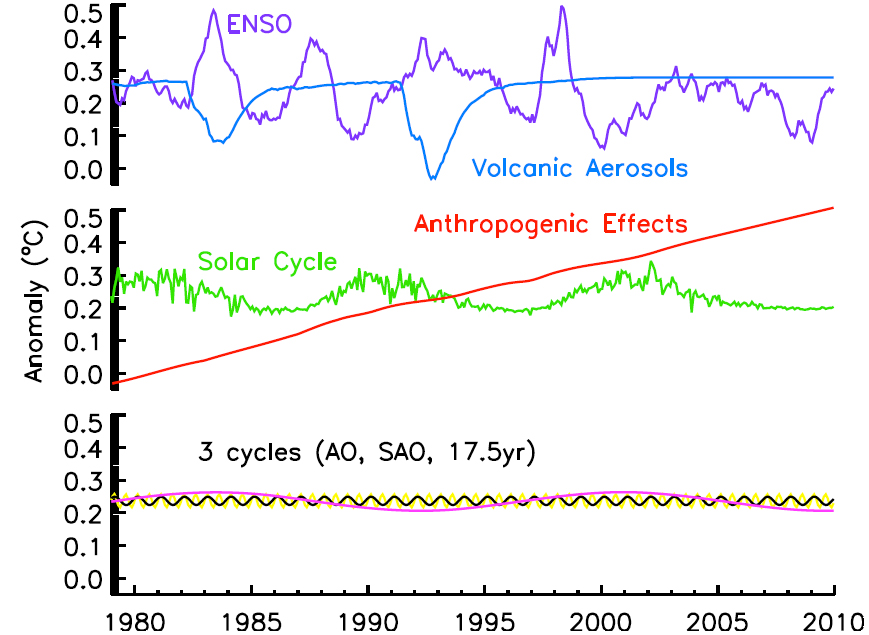

New research led by CU-Boulder/LASP scientist Greg Kopp will advance scientists’ understanding of the contribution of natural versus anthropogenic causes of climate change. The research improves the accuracy of the continuous, 32-year record of the sun’s energy output, which scientists call total solar irradiance (TSI). Energy from the sun is the primary energy input driving Earth’s climate, which scientific consensus indicates has been warming since the Industrial Revolution.
Kopp said, “Improved accuracies and stabilities in the long-term total solar irradiance record mean improved estimates of the sun’s influence on Earth’s climate.”
Judith Lean of the Naval Research Laboratory, co-author of the study, specializes in the effects of the sun on climate and space weather. She said, “Scientists estimating Earth’s climate sensitivities need accurate and stable solar irradiance records to know exactly how much warming to attribute to changes in the sun’s output, versus anthropogenic or other natural forcings.”
The research, which was published in the January 14, 2010, issue of Geophysical Research Letters, supports a lower TSI value than scientists had previously accepted. This new value has been reported by the LASP-built Total Irradiance Monitor (TIM) instrument on the NASA Solar Radiation and Climate Experiment (SORCE) mission; validation tests at a new calibration facility at LASP support the lower TSI value. The ground-based calibration facility enables scientists to validate their instruments against a reference standard calibrated by the National Institute of Standards and Technology (NIST) under conditions similar to on-orbit. Before the development of the calibration facility, solar irradiance instruments frequently returned very different measurements from each other, depending on their calibration. To maintain a long-term record of the sun’s output through time, scientists had to rely on overlapping measurements that allowed them to intercalibrate between instruments.
Kopp said, “The calibration facility indicates that the TIM is producing the most accurate total solar irradiance results to date, providing a baseline value that allows us to make the entire 32-year record more accurate. This baseline value will also help ensure that we can maintain this important climate data record for years into the future, reducing the risks from a potential gap in spacecraft measurements.”
Lean said, “We are eager to see how this lower irradiance value affects global climate models, which use various parameters to reproduce current climate: incoming solar radiation is a decisive factor. An improved and extended solar data record will make it easier for us to understand how fluctuations in the sun’s energy output over time affect temperatures, and how Earth’s climate responds to radiative forcing.”
Lean’s model, which is now adjusted to the new lower absolute TSI values, reproduces with high fidelity the TSI variations that TIM observes and indicates that solar irradiance levels during the recent prolonged solar minimum period were likely comparable to levels in past solar minima. Using this model, Lean estimates that solar variability produces about 0.1°C global warming during the 11-year solar cycle, but is not the main cause of global warming in the past three decades.
More information
- SORCE: http://lasp.colorado.edu/sorce/
- LASP Interactive Solar Irradiance Data Center (LISIRD): http://lasp.colorado.edu/lisird/
Citation
- Kopp, Gregory, and Judith Lean. 2010. A New, Lower Value of Total Solar Irradiance: Evidence and Climate Significance. Jan. 14, 2010. Geophysical Research Letters. AGU.
Contacts
CU-Boulder/LASP:
- Greg Kopp, lead author: 303-735-0934 or Greg.Kopp@lasp.colorado.edu
- Stephanie Renfrow, press office: 303-735-5814 or Stephanie.renfrow@lasp.colorado.edu
CU-Boulder:
- Jim Scott, press office: 303-492-3114 or Jim.scott@colorado.edu
Naval Research Laboratory:
- Donna McKinney, Public Affairs Office: 202-404-3322 or donna.mckinney@nrl.navy.mil
AGU:
- Peter Weiss, Public Information Manager: 202-777-7507 or pweiss@agu.org



